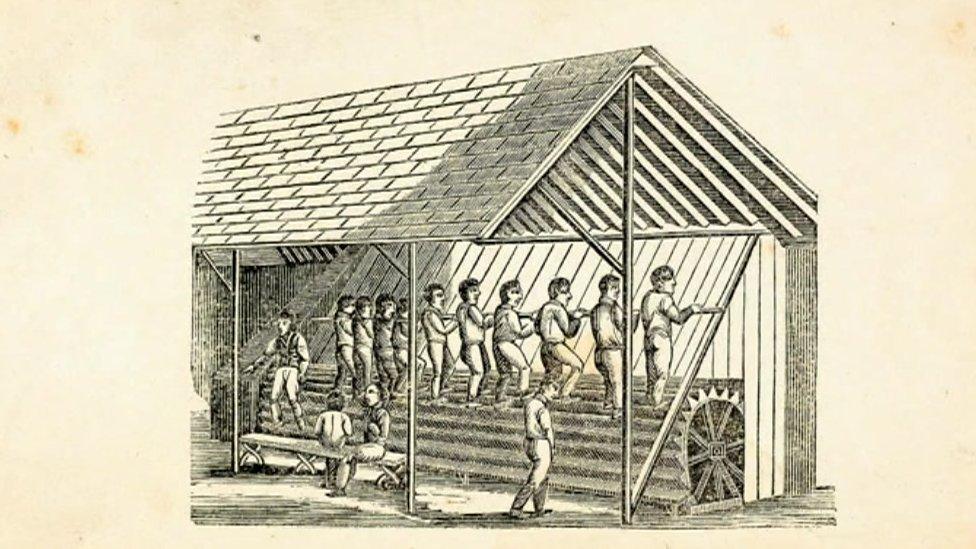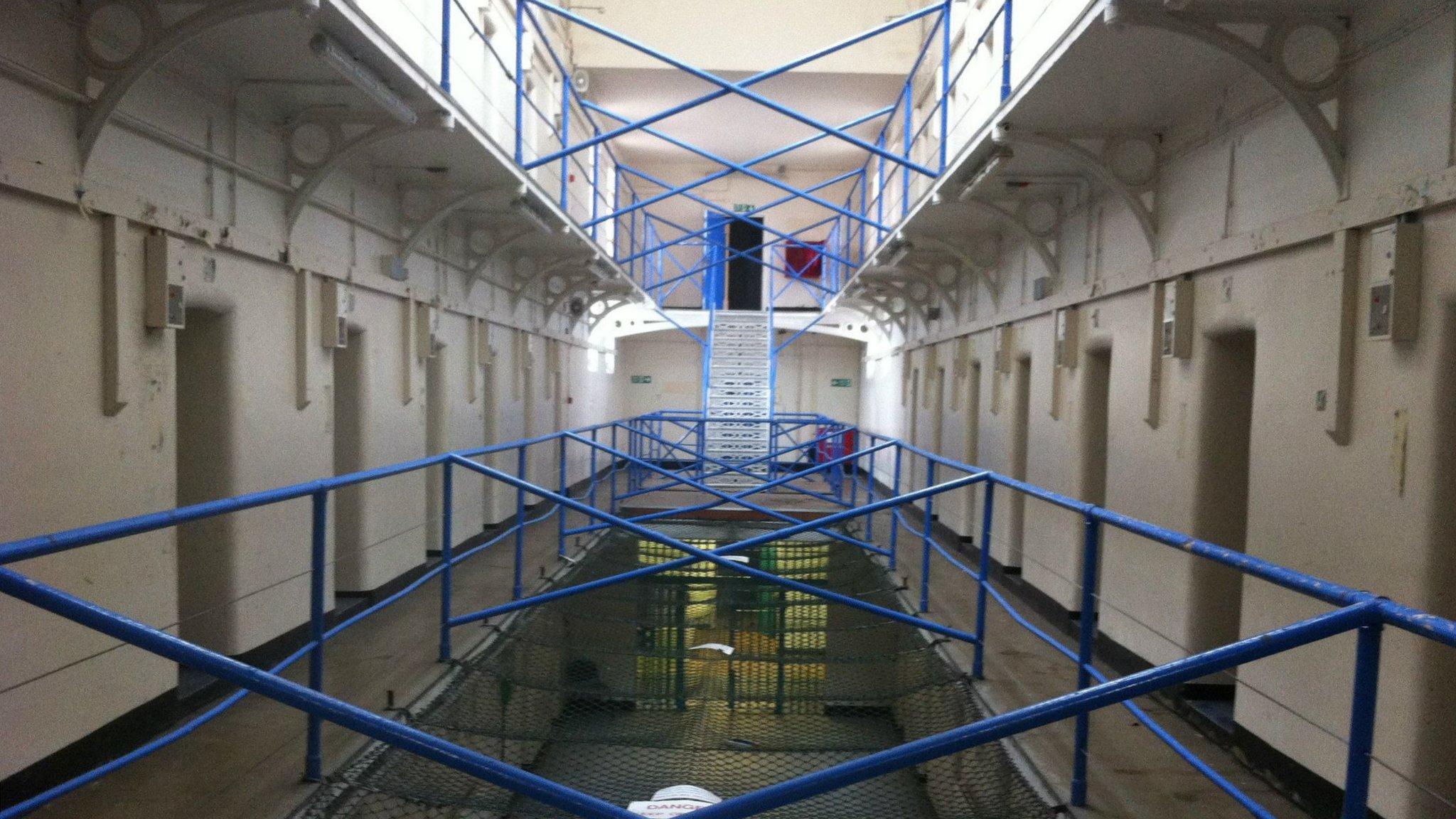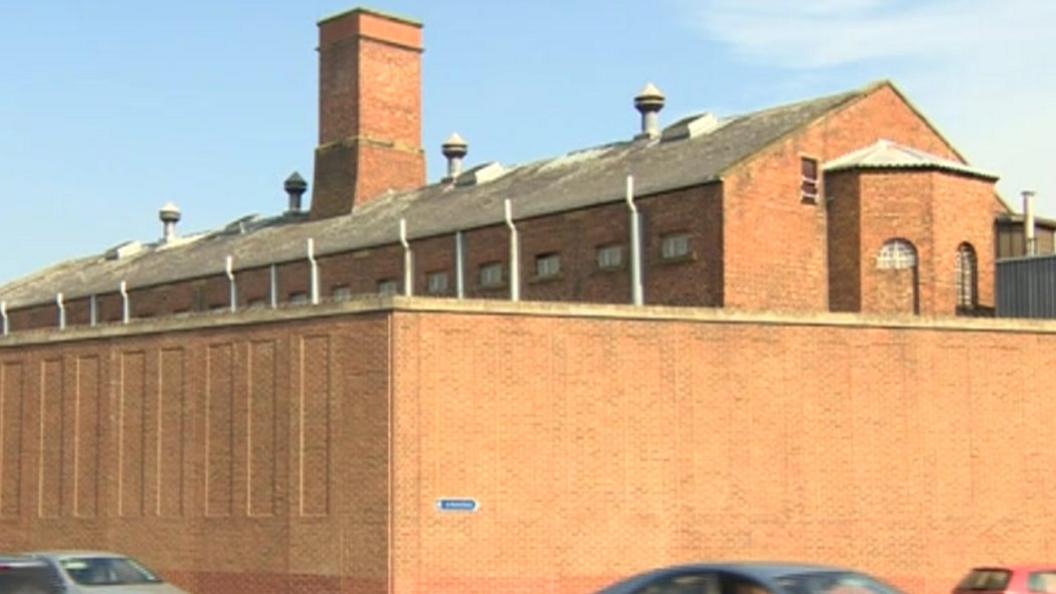Cinema and shops plan for former Northallerton prison site
- Published

The planned Treadmills scheme will include leisure and retail developments
Plans for a £17m retail and leisure scheme on a former prison site have been revealed.
The proposed Treadmills scheme on the Northallerton jail site would include a cinema, shops and offices.
Listed buildings on the North Yorkshire site would be brought back into use and a heritage centre would be created under the plans, the developer said.
A spokesman described the scheme as "Northallerton's most significant regeneration scheme for decades".
More news from across Yorkshire
The name of the proposed redevelopment is drawn from an unusual punishment some inmates at the jail endured during the Victorian age.
A number of wooden treadmills, including one thought to be the biggest in the world at the time, were introduced at the prison in the 1820s and inmates were forced to line up and pace on the devices.
Prison treadmills were abolished with the passing of the 1898 Prisons Act.

Male and female inmates would be expected to walk the treadmill
Ahead of demolition of some buildings on site, the York Archaeological Trust (YAT) carried out exploratory works and uncovered the original foundations of the largest treadmill.
The new plans have been put forward by the Central Northallerton Development Company (CNDC), a joint venture between site owner Hambleton District Council and developer Wykeland Group.
A CNDC spokesman said the scheme would offer "sensitive conversion of the site's five remaining listed former prison buildings to form offices, apartments, shops, cafés and restaurants".
"Conversion of these buildings will respect their history and heritage and key period features such as the cell windows will be retained," he added.

Archaeologists at the Northallerton jail site

Treadmills in prisons
Engineer Sir William Cubitt invented the "everlasting staircase" in 1818
It was a long cylinder surrounded by steps - as the prisoner put weight on a step it depressed, forcing inmates to keep climbing as the cylinder rotated
Larger treadmills would have up to 25 positions
Prisons usually had separate treadmills for men and women
It was often merely used as a punishment with no purpose
Treadmills could also be used to power water pumps or grind corn
Men and women would be expected to walk the treadmills for hours as part of the hard labour element of their sentences

- Published9 September 2017

- Published8 July 2015

- Published24 February 2015

- Published2 September 2014

- Published19 August 2014

- Published31 December 2013

- Published1 November 2013
